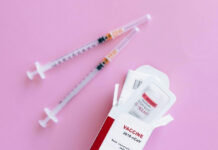THUNDER BAY – Based on a quick trip around the city, there are not record numbers of trick or treaters out there in many parts of Thunder Bay.
Earlier today, at the Real Canadian Superstore on Memorial Avenue, they were giving away pumpkins, but there was no any halloween candy to be found in the stores.
For those hard-core COVID-19 exposure risk from contaminated candy could be successfully mitigated both by washing hands and washing candy using a simple at-home method. A team of researchers published this work today in mSystems, an open-access journal of the American Society for Microbiology.
The researchers enrolled 10 recently diagnosed asymptomatic or mildly/moderately symptomatic COVID-19 patients to handle typical Halloween candy (pieces individually wrapped) under three conditions: normal handling with unwashed hands, deliberate coughing and extensive touching, and normal handling following handwashing.
The researchers described how they washed the candy, a simple process, which should be easy for anyone to recreate with household ingredients: In a container big enough to fit the amount of candy you intend to wash, prepare a 1:50 dilution of dish soap detergent (containing Sodium laureth sulfate [SLS] sometimes written as Sodium dodecyl sulfate [SDS]) in water by mixing 3 oz of detergent per gallon of water. Submerge the candy in the solution and agitate to evenly cover all surfaces of the candy wrappers with the detergent solution. Let the candy sit in the detergent solution for no less than 1 minute. Finally, rinse the candy with clean water.
From the candies not washed post-handling, SARS-CoV-2 was detected on 60% of candies that were deliberately coughed on, 60% of candies normally handled with unwashed hands, but only 10% of candies handled after hand washing. Treating candy with dishwashing detergent reduced SARS-CoV-2 load by 62.1% in comparison to untreated candy. Viral RNA load of SARS-CoV-2 was reduced to near zero by the combination of handwashing by the infected patient and ?1 minute detergent treatment after collection.
It is important to note that SARS-CoV-2 is primarily transmitted by respiratory droplets and aerosols. “Taking preventative measures to clean candy is reasonable if one wants to be extra cautious, but the main risk of COVID-19 transmission during trick-or-treating is airborne transmission,” said Rodolfo Salido, Ph.D., lead author on the study and research associate in the department of engineering, University of California, San Diego.







